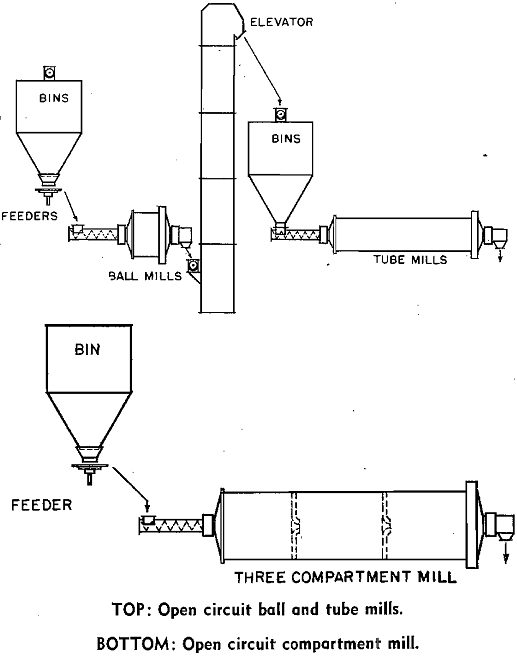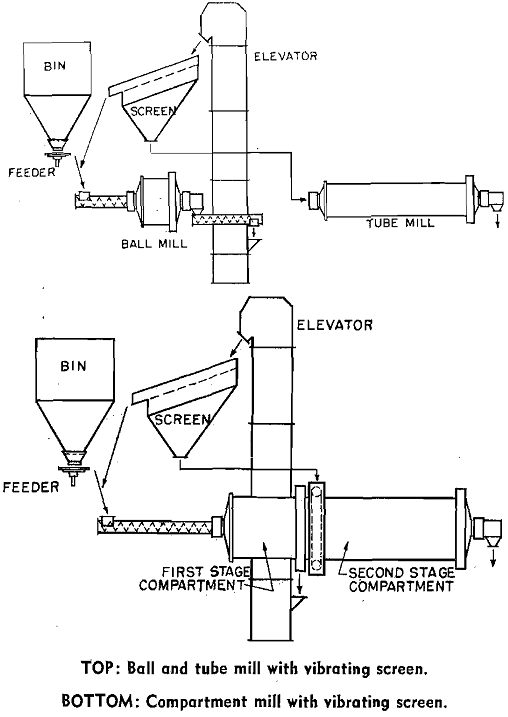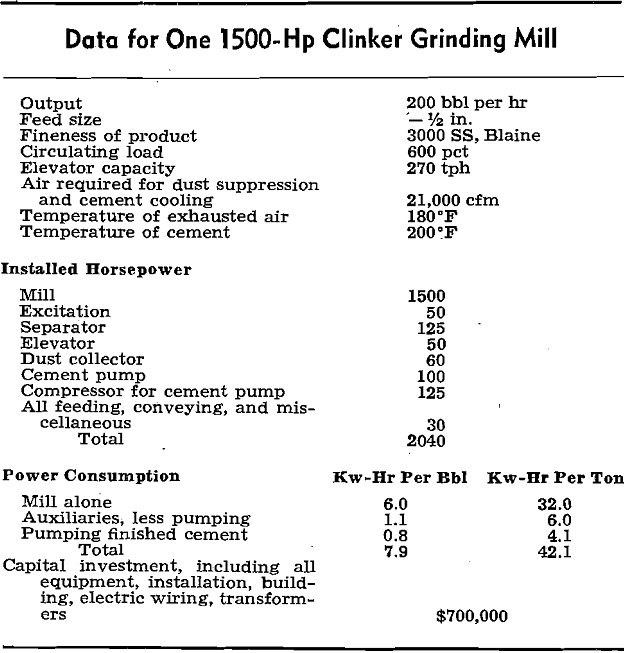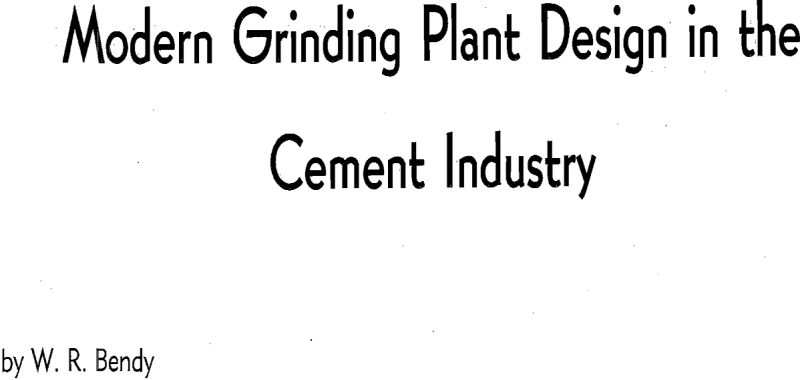Grinding is a large and costly part of Portland cement manufacture. Prior to clinkering in the rotary kiln, raw materials are ground to a fineness of 80 to 90 pct passing 200 mesh. Then, after burning and cooling, the resulting clinker is ground to about 92 pct passing 325 mesh.
Open Circuit Clinker Grinding: Many early clinker grinding plants employed two-stage, open circuit grinding. Comparatively short mills of large diameter, loaded with balls 4 in. and smaller, first reduced the clinker to 95 pct passing 14 mesh. Tube mills of smaller diameter and greater length, loaded with balls 1¼ in. and smaller, carried out the fine grinding operation.
Oversize Particles: Open circuit mills, whether separate ball and tube mills or compartment mills, always encountered the problem of tramp oversize in the product. A small percentage of clinker survived passage through the first grinding stage as particles—perhaps 1/16 in. diam—that were too large for the smaller balls in the following stages to reduce to —200 mesh. When the feed rate was lowered to reduce tramp oversize, there were serious losses in grinding efficiency.


Closed Circuit with Air Separator: Although screens after the first stage of grinding largely solved the problem of tramp oversize, the final stage still remained in open circuit. With the passage of time, higher and higher cement finenesses were called for. Overheating and ball coating reduced grinding efficiency. It became increasingly costly to produce the new high-fineness cements in open circuit.
When the tailings from an air separator are returned to the mill, a circulating load is created. Although the circulating load contains a certain amount of fine particles, the material in transit through the mill is considerably coarser than in open circuit. This reduces the formation of coating on the small balls. It is also, possible to draw a large quantity of air through the air separator, exhausting it to a bag-type dust collector, thereby cooling both the tailings being returned to the mill and the finished cement. Imperfect as the air separator may be as an accurate sizer of fine particles, it has the following advantages, which become more pronounced with high-fineness cements: 1) elimination of oversize particles; 2) reduction of ball coating; 3) lowering of temperature of mill and product; 4) some gain in mill output.
It is entirely feasible first to grind the clinker in a preliminary mill, and then to follow it with a tube mill in closed circuit with an air separator. This is done in many older installations, in which air separators have been applied to existing tube mills. Once the air separator is employed, however, no advantage can be found in doing the preliminary grinding in a separate mill. Modern installations often use the closed circuit compartment mill, which is simpler.
Arrangement of Units for Clinker Grinding: The lowest capital investment for a cement plant of given

Various arrangements of this equipment are possible. If the air separator is placed near the discharge end of the mill, the elevator can be conveniently located next to the air separator. The tailings must then be conveyed back to the feed end of the mill. If the tailings conveyor is located beneath the service crane, there is some restriction to the movement of the crane hook. If it is placed above the service crane, the air separator must be installed higher.

